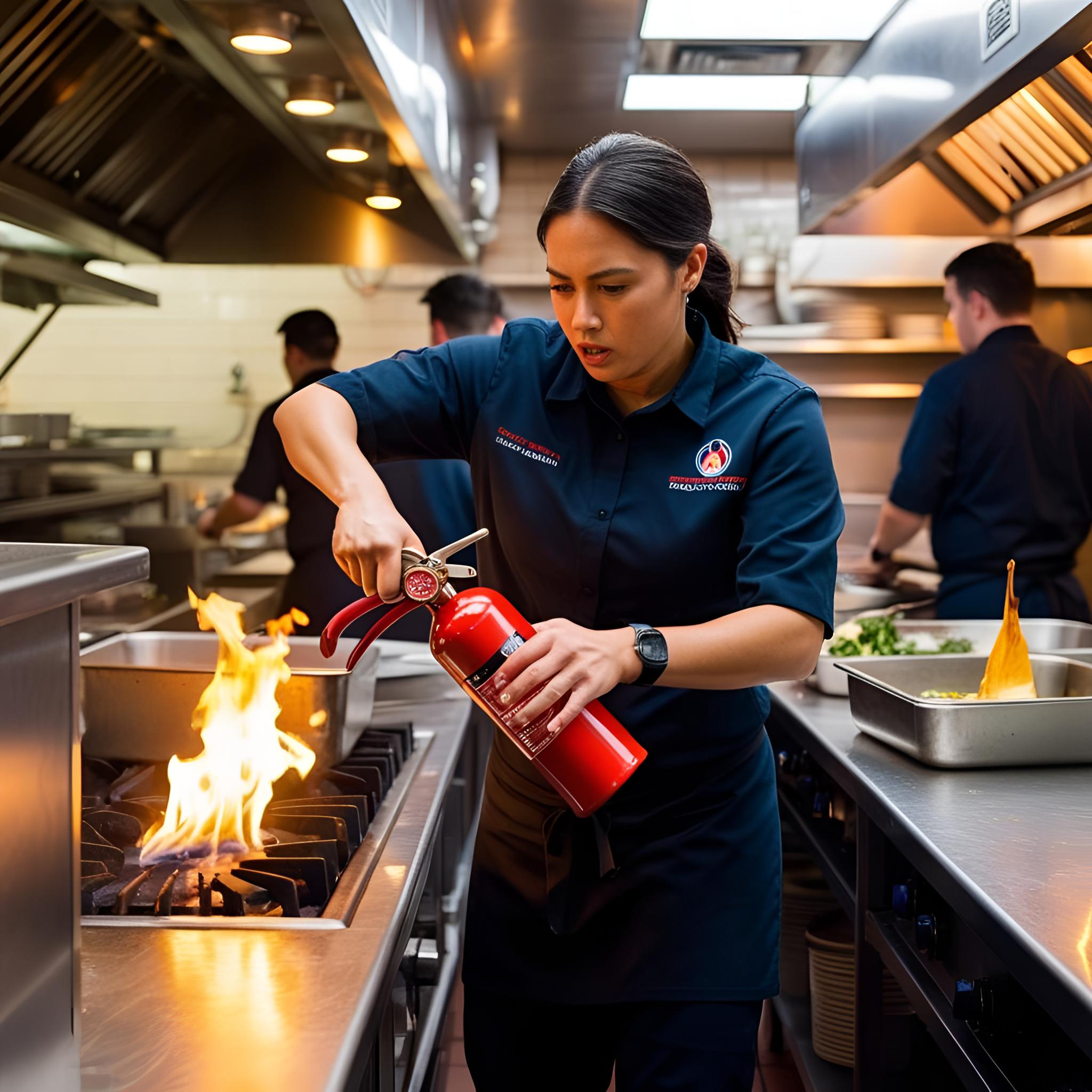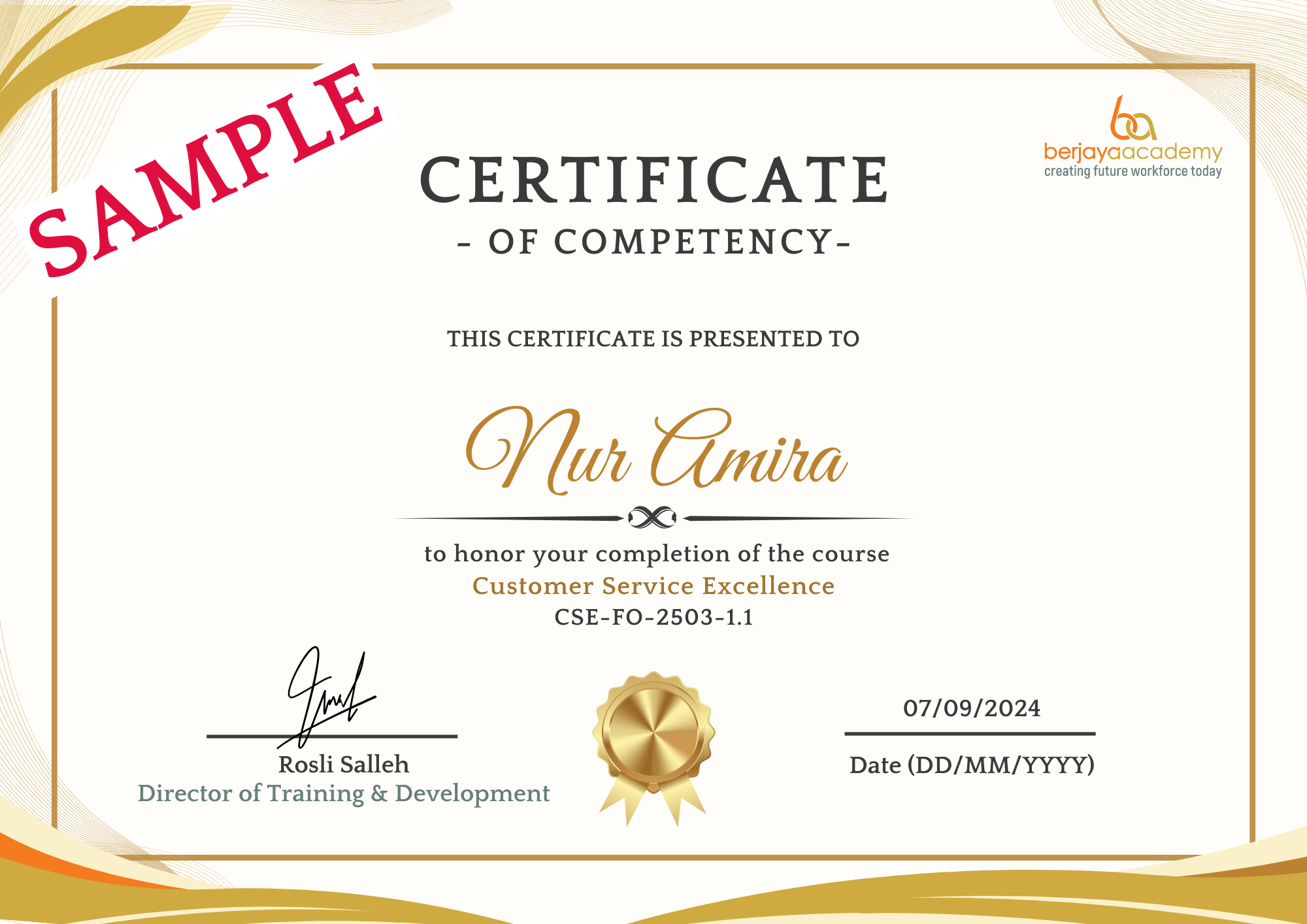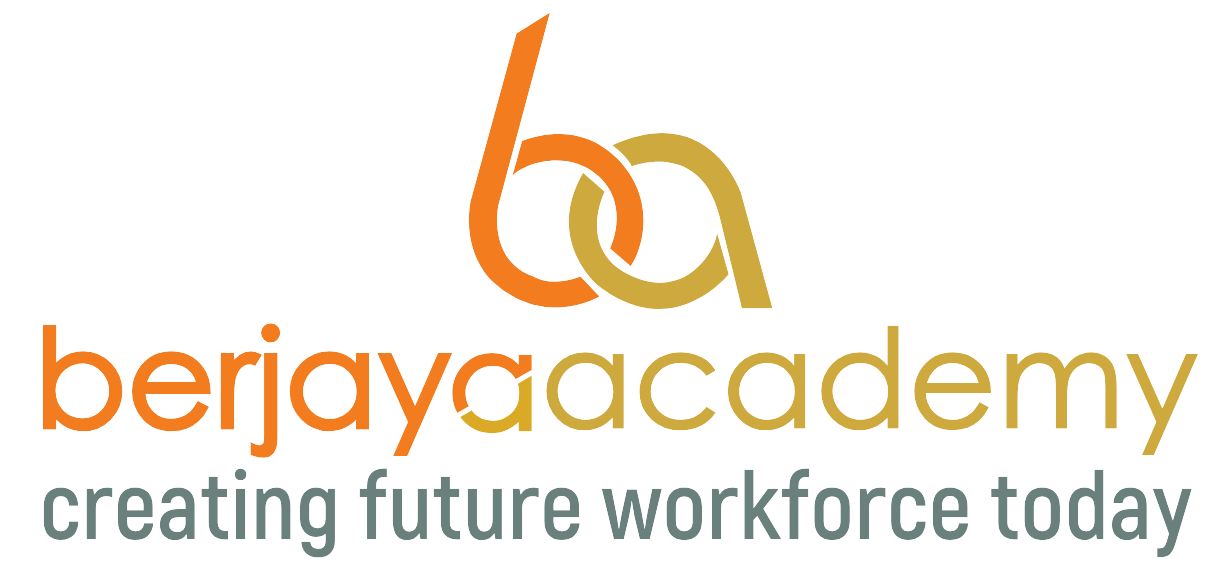
Course Details
Course Title: Fire Safety and Emergency Response
Course Code: FSEM-KS-2503-1.1
Course Accreditation
Accreditation Type: Certificate of Competency
Course Duration
Total Course Hours: 8 hours (1 day)
Course Fee
Total Course Fee: S$180/pax
Funding Available (If Applicable):
- Training Industry Professionals in Tourism (TIP-iT)
- NTUC Company Training Committee (CTC) Grant
Summary
Topics:
- Identifying fire hazards in the kitchen.
- Identifying fire hazards in the kitchen.
- Safe use and storage of flammable materials.
- Operating fire suppression systems and extinguishers.
- Evacuation protocols during kitchen fires.


Learning Objectives for Fire Safety and Emergency Response for Kitchen Staff
By the end of this course, participants will be able to:
- Identify potential fire hazards in the kitchen environment and understand how to mitigate fire risks.
- Safely use and store flammable materials in accordance with fire safety regulations to prevent accidents.
- Operate fire suppression systems and extinguishers effectively to control small fires and prevent them from escalating.
- Follow evacuation protocols during kitchen fires, ensuring the safe and efficient evacuation of staff and guests.
Learning Units for Fire Safety and Emergency Response for Kitchen Staff
Unit 1: Identifying Fire Hazards in the Kitchen
- Objective: Recognize common fire hazards in the kitchen and apply preventive measures to reduce the risk of fires.
- Content:
- Types of fire hazards in the kitchen (e.g., grease, electrical appliances, combustible materials).
- Identifying hot spots and areas where fire risks are higher (e.g., near ovens, stovetops, and deep fryers).
- Understanding the fire triangle (fuel, heat, and oxygen) and how to eliminate one of these elements to prevent fire.
- Risk assessment techniques to identify and reduce fire hazards.
Unit 2: Safe Use and Storage of Flammable Materials
- Objective: Understand the importance of safe handling, use, and storage of flammable materials to prevent fire hazards.
- Content:
- Types of flammable materials in the kitchen (e.g., cooking oils, cleaning solvents, paper towels).
- Proper storage practices for flammable materials (e.g., storing oils away from heat sources).
- Safe handling and disposal of waste materials that may be flammable (e.g., grease traps, paper waste).
- Risk mitigation strategies for areas with high concentrations of flammable materials.
Unit 3: Operating Fire Suppression Systems and Extinguishers
- Objective: Learn how to effectively operate fire suppression systems and fire extinguishers in the kitchen.
- Content:
- Overview of fire suppression systems commonly used in kitchens (e.g., wet chemical suppression systems for deep fryers).
- Understanding the different types of fire extinguishers (Class A, B, C, and K) and their specific uses.
- Proper techniques for using fire extinguishers (PASS method: Pull, Aim, Squeeze, Sweep).
- Preventative maintenance and regular checks of fire suppression systems and extinguishers.
Unit 4: Evacuation Protocols During Kitchen Fires
- Objective: Understand and apply evacuation protocols to ensure a quick and safe exit during a kitchen fire emergency.
- Content:
- The importance of kitchen-specific evacuation procedures, including designated evacuation routes and assembly points.
- The role of kitchen staff in assisting with evacuation and guiding guests to safety.
- Steps to take when an evacuation order is given (e.g., closing doors, turning off appliances, using fire exits).
- Evacuation drills and practice to ensure everyone knows their role in an emergency.
